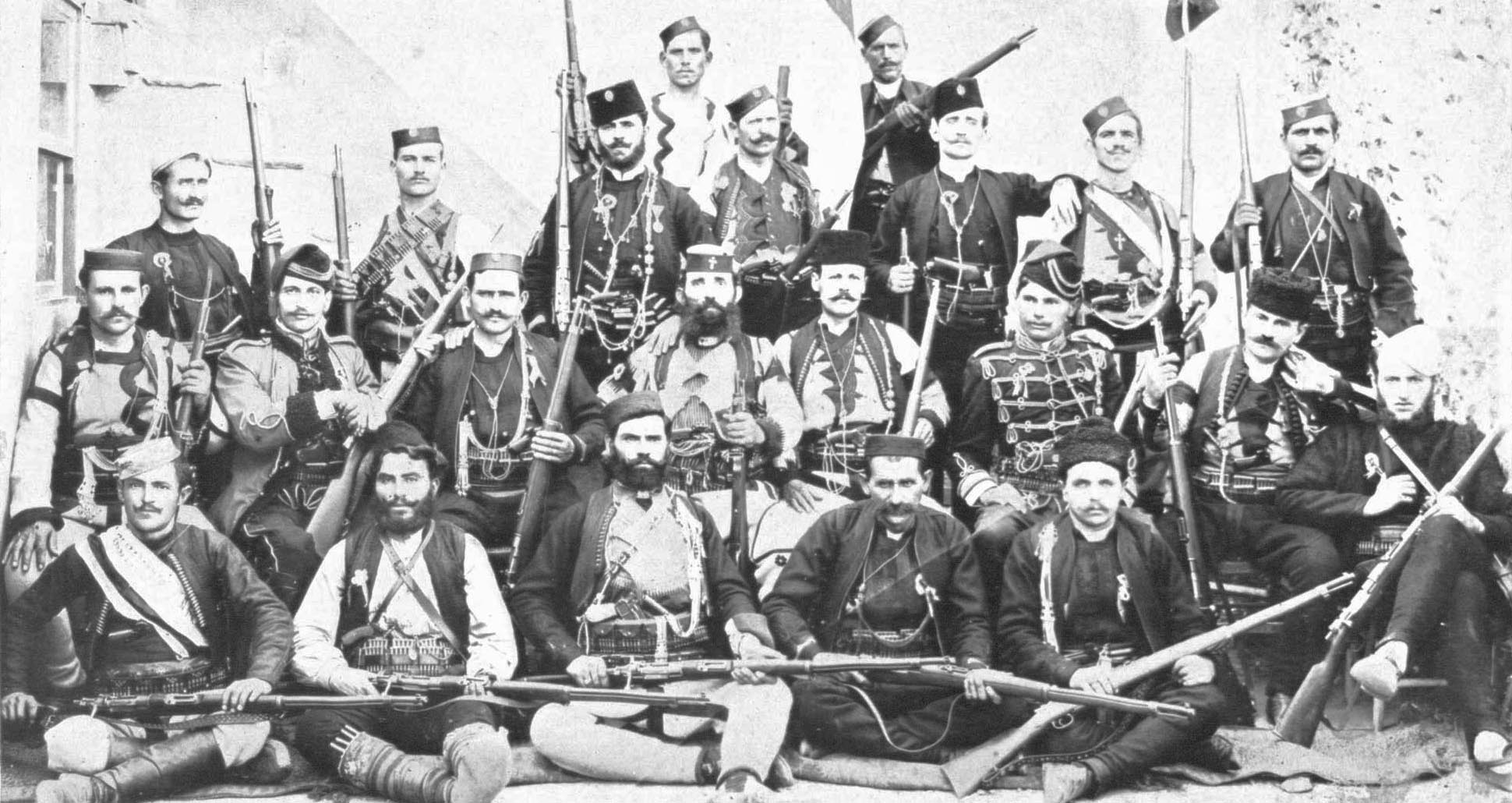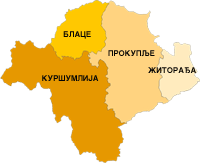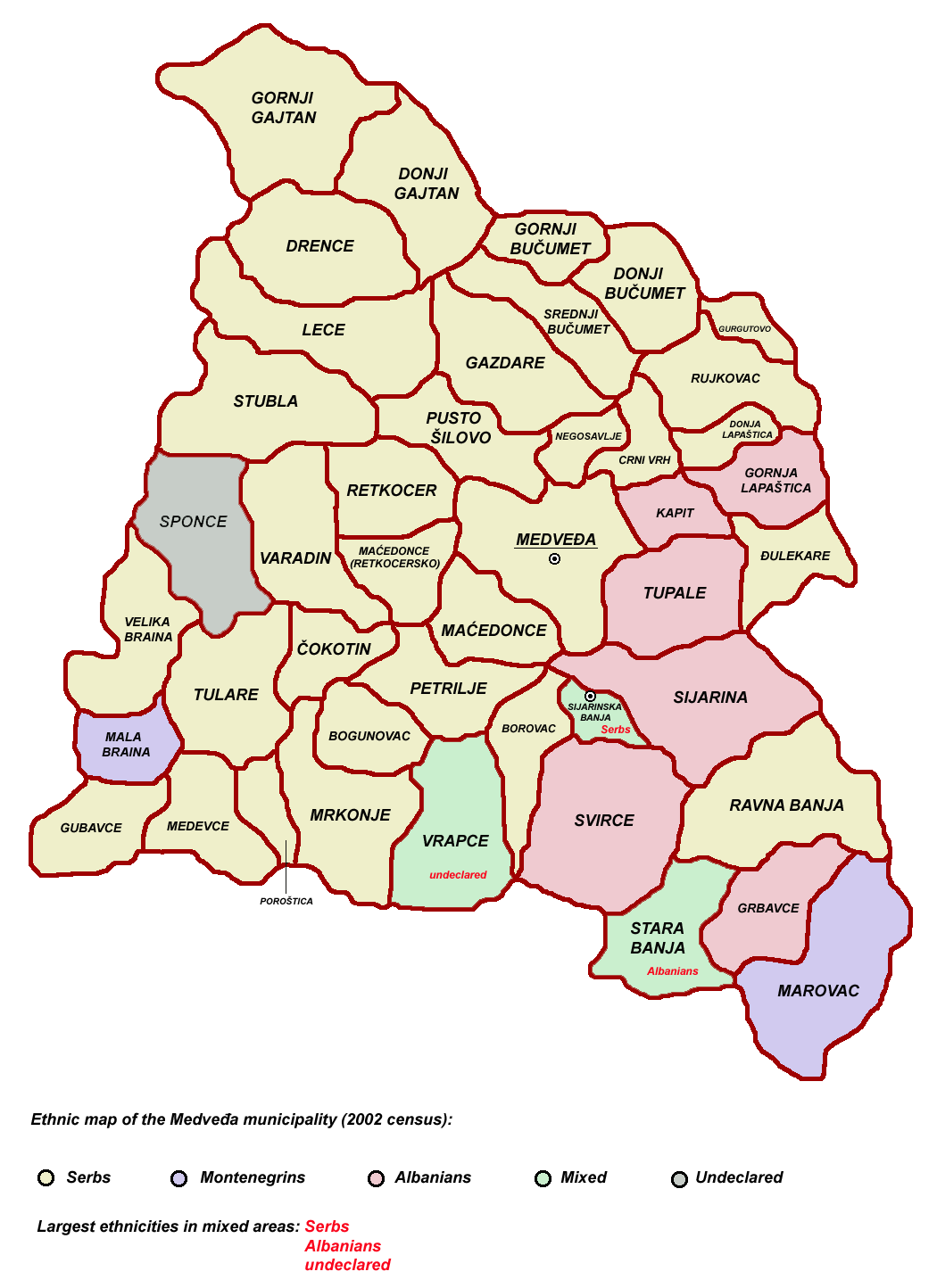|
Alimpije Marjanovic
Alimpije Marjanoviƒá (Donja ≈Ýatornja, 24 December 1874 - Belgrade, 15 March 1940) was a Serbian revolutionary and commander who fought in the struggle for Macedonia, the Balkan Wars and the Great War. His military reputation is equal to Vojin Popoviƒá and Vojislav Tankosiƒá as leading Chetniks in the Balkan Wars and World War I. Early life He was born in Donja ≈Ýatornja. After his primary education, the family moved to Belgrade where Marjanoviƒá finished high school and entered the Military Academy. He rounded out his education in post-graduate studies in France's Saint Cyr Military Academy. Career He spent 23 years in the army with 27 different services. He retired as a colonel.–ü. –î. –°. –à–µ—Ä–∏–Ω–∏—õ, –í–æ—ò–≤–æ–¥–µ –∏–∑ —á–µ—Ç–Ω–∏—á–∫–µ –∞–∫—Ü–∏—ò–µ —É –°—Ç–∞—Ä–æ—ò –°—Ä–±–∏—ò–∏ –∏ –ú–∞—õ–µ–¥–æ–Ω–∏—ò–∏ 1903-1912, –î–æ–±—Ä–æ–≤–æ—ô–∞—á–∫–∏ –≥–ª–∞—Å–Ω–∏–∫, –±—Ä. 32, –ë–µ–æ–≥—Ä–∞–¥ 2008, 14-15. In 1908, Major Marjanoviƒá served as the head of the eastern Povardarie's mountain ... [...More Info...] [...Related Items...] OR: [Wikipedia] [Google] [Baidu] |
Donja ≈Ýatornja
Donja ≈Ýatornja (''–î–æ—ö–∞ –®–∞—Ç–æ—Ä—ö–∞'') is a village located in Serbia. It has approximately 890 inhabitants and is located at 98 km from the capital of Serbia, Belgrade, in the municipality of Topola. One of the most beautiful medieval monasteries of the Serbian Orthodox Church Nikolje is also located in Donja ≈Ýatornja. The center of the village has a wide variety of cafes and kafana Kafana is a distinct type of local bistro (or tavern), common in former Yugoslav countries and Albania, which primarily serves alcoholic beverages and coffee, and often also light snacks (''meze'') and other food. Many kafanas feature live music ...s, traditional Serbian restaurants, which are the main tourist attraction of the region. Populated places in ≈Ýumadija District {{≈ÝumadijaRS-geo-stub ... [...More Info...] [...Related Items...] OR: [Wikipedia] [Google] [Baidu] |
Živko Gvozdić
Živko Gvozdić ( sr-cyr, Живко Гвоздић; fl. 1903–18) was a Serbian Chetnik commander active in Old Serbia and Macedonia between 1903 and 1908, and a Serbian regiment commander in the Balkan Wars (1912–13) and First World War (1914–18). He was born in Vučitrn. He finished the Belgrade Military School with the rank of sergeant (''podnarednik''). He joined the Serbian Chetnik Organization upon its establishment. While fighting in West Povardarje, he was subordinate ''vojvoda'' Gligor Sokolović. In documents from 1906 and 1907, he is described as an able and courageous fighter. During the Serbian mobilization of the First Balkan War, the Chetnik detachments of the Serbian 3rd Army included: ''Medveđa'', colon headed by captain Dušan Sekulić, Ljubomir Vulović and Nikodim Racić (Lisica-Prapaštice-Priština), and colon headed by Božin Simić (Svirci-Novo Brdo-Kačanik); ''Kuršumlija'', under the command of captain and Chetnik vojvoda Vojislav Tankosić a ... [...More Info...] [...Related Items...] OR: [Wikipedia] [Google] [Baidu] |
1940 Deaths
Year 194 ( CXCIV) was a common year starting on Tuesday (link will display the full calendar) of the Julian calendar. At the time, it was known as the Year of the Consulship of Septimius and Septimius (or, less frequently, year 947 ''Ab urbe condita''). The denomination 194 for this year has been used since the early medieval period, when the Anno Domini calendar era became the prevalent method in Europe for naming years. Events By place Roman Empire * Emperor Septimius Severus and Decimus Clodius Septimius Albinus Caesar become Roman Consuls. * Battle of Issus: Septimius Severus marches with his army (12 legions) to Cilicia, and defeats Pescennius Niger, Roman governor of Syria. Pescennius retreats to Antioch, and is executed by Severus' troops. * Septimius Severus besieges Byzantium (194–196); the city walls suffer extensive damage. Asia * Battle of Yan Province: Warlords Cao Cao and Lü Bu fight for control over Yan Province; the battle lasts for over 100 ... [...More Info...] [...Related Items...] OR: [Wikipedia] [Google] [Baidu] |
1874 Births
Events January–March * January 1 – New York City annexes The Bronx. * January 2 – Ignacio Mar√≠a Gonz√°lez becomes head of state of the Dominican Republic for the first time. * January 3 – Third Carlist War – Battle of Caspe: Campaigning on the Ebro in Aragon for the Spanish Republican Government, Colonel Eulogio Despujol surprises a Carlist force under Manuel Marco de Bello at Caspe, northeast of Alca√±iz. In a brilliant action the Carlists are routed, losing 200 prisoners and 80 horses, while Despujol is promoted to Brigadier and becomes Conde de Caspe. * January 20 – The Pangkor Treaty (also known as the Pangkor Engagement), by which the British extended their control over first the Sultanate of Perak, and later the other independent Malay States, is signed. * January 23 **Alfred, Duke of Saxe-Coburg and Gotha, Prince Alfred, Duke of Edinburgh, second son of Queen Victoria, marries Grand Duchess Maria Alexandrovna of Russia, only daug ... [...More Info...] [...Related Items...] OR: [Wikipedia] [Google] [Baidu] |
List Of Chetnik Voivodes
This is a list of Chetnik voivodes. VoivodeAlso spelled "voievod", "woiwode", "voivod", "voyvode", "vojvoda", or "woiwod" () ( Old Slavic, literally "war-leader" or "war-lord") is a Slavic as well as Romanian title that originally denoted the principal commander of a military force. It derives from the word ''vojevoda'', which in early Slavic meant the ''bellidux'', i.e. the military commander of an area, but it usually had a greater meaning. Among the first modern-day voivodes was Kole Rašić, a late 19th-century Serb revolutionary and guerrilla fighter, who led a cheta of 300 men between Niš and Leskovac in Ottoman areas during the Serbo-Turkish War (1876–1878). The others were Rista Cvetković-Božinče, Čerkez Ilija, Čakr-paša, and Spiro Crne. Jovan Hadži-Vasiljević, who knew Spiro Crne personally, wrote and published his biography, ''Spiro Crne Golemdžiojski'', in 1933. Commanders of Old Serbia and Macedonia (1903–1912), Balkan Wars * Kosta Milovanović-P ... [...More Info...] [...Related Items...] OR: [Wikipedia] [Google] [Baidu] |
Kolašin
Kolašin (Montenegrin Cyrillic: Колашин, ) is a town in northern Montenegro. It has a population of 2,989 (2003 census). Kolašin is the centre of Kolašin Municipality (population 9,949) and an unofficial centre of Morača region, named after Morača River. History Ottoman period Kolašin, fortress-settlement, was raised by the Turks in the middle of the 17th century in the namesake village in Nikšić district ( nahiye). The village of Kolašin was first mentioned in the Sultan's Decree in 1565, by which the deceased Grand Duke Miloš was replaced by his son Todor. The Turkish town was named after the former village of Kolašin. In 1651, Patriarch Gavrilo assigned Eparch of Zahumsko, the Eparchy of Nikšić, Plana, the Kolašinovićevs and the Morača to Basil of Ostrog. This document also, like the one from 1667, shows that the Orthodox Christian population of this region called the Kolašinovići, was organized in a recognized and respected tribal community of th ... [...More Info...] [...Related Items...] OR: [Wikipedia] [Google] [Baidu] |
Lukovo, Struga
Lukovo is a village in Struga Municipality, in North Macedonia. It was a seat of Lukovo Municipality until 2004. History ''Latinski Dabje'' is the name of a nearby mountain in Lukovo. It takes its name from ''Latini'' which in the Middle Ages was used by Slavic and Aromanian Orthodox communities to refer to Catholic Albanians. The presence of the toponym suggests either direct linguistic contact with Albanians or the former presence of Catholic Albanians in the area of Lukovo. Lukovo is attested in the Ottoman ''defter'' of 1467 as a village in the timar of Saadi Hoca in the vilayet of Dulgoberda. The settlement had a total of 11 households and the anthroponymy recorded depicts a predominantly Slavic character, although Albanian personal names are also attested (e.g., ''Gjergj Brateshi''), alluding to Albanian-Slavic cohabitation or symbiosis. A certain ''Todec'' from Çermenika appears among the household heads. Demographics According to the 2002 census, the village ha ... [...More Info...] [...Related Items...] OR: [Wikipedia] [Google] [Baidu] |
Kuršumlija
Kuršumlija ( sr-Cyrl, Куршумлија, ) is a town and municipality located in the Toplica District of the southern Serbia. It is situated near the rivers Toplica, Kosanica and Banjska, southeast of Mount Kopaonik and northwest of Mount Radan. As of 2011, the town has 13,306 inhabitants, while municipality has 19,213. Geography Kuršumlija sits on the area of and administratively is in Toplica District. Its borders the municipalities of Brus, Blace, Prokuplje, Medveđa, Podujevo, and Leposavić. Its southwest border (105 km) is within the disputed territory of Kosovo. History The Romans established the Ad Fines military outpost in the 3rd century AD. There are also remains of churches from the Byzantine period. The Serbian principality of Rascia expanded from this region. Stefan Nemanja, a Serbian lord (župan), and the founder of Nemanjić dynasty, built his residence here, as well as the two monasteries of St Nicolas and the Holy Mother of God (before 1168) ... [...More Info...] [...Related Items...] OR: [Wikipedia] [Google] [Baidu] |
Medveđa
Medveđa ( sr-cyr, Медвеђа, ; sq, Medvegja, ) is a town and municipality located in the Jablanica District of southern Serbia. According to the 2011 census, the town has a population of 2,848 inhabitants, while the municipality has 7,438 inhabitants. Etymology The name is derived from the Serbian word ''medved'' (медвед), "bear", hence meaning "the place of the bears". History During the Roman period, there was a town (''mansia'') with the name Idimum located in the cadastral area of the modern town. Architectural debris dating to the 4th century AD lay at various locations of the town, as it was a transitory zone of Upper Moesia; travel and postal stations are among the finds. Toponyms such as ''Arbanaška'' and ''Đjake'' shows an Albanian presence in the Toplica and Southern Morava regions (located north-east of contemporary Kosovo) before the expulsion of Albanians during 1877–1878 period. The rural parts of Jablanica valley and adjoining semi-mountainous ... [...More Info...] [...Related Items...] OR: [Wikipedia] [Google] [Baidu] |
Second Balkan War
The Second Balkan War was a conflict which broke out when Bulgaria, dissatisfied with its share of the spoils of the First Balkan War, attacked its former allies, Serbia and Greece, on 16 ( O.S.) / 29 (N.S.) June 1913. Serbian and Greek armies repulsed the Bulgarian offensive and counter-attacked, entering Bulgaria. With Bulgaria also having previously engaged in territorial disputes with Romania and the bulk of Bulgarian forces engaged in the south, the prospect of an easy victory incited Romanian intervention against Bulgaria. The Ottoman Empire also took advantage of the situation to regain some lost territories from the previous war. When Romanian troops approached the capital Sofia, Bulgaria asked for an armistice, resulting in the Treaty of Bucharest, in which Bulgaria had to cede portions of its First Balkan War gains to Serbia, Greece and Romania. In the Treaty of Constantinople, it lost Adrianople to the Ottomans. The political developments and military preparations f ... [...More Info...] [...Related Items...] OR: [Wikipedia] [Google] [Baidu] |
Lisičani
Lisičani ( mk, Лисичани) is a village in the municipality of Plasnica, North Macedonia. Demographics The village is attested in the 1467/68 Ottoman tax registry (defter) for the Nahiyah of Kırçova. The village had a total of 44 houses, excluding bachelors (''mucerred'').Qerim Dalipi. "NAHIJA E KËRÇOVËS SIPAS REGJISTRIMIT TË VITEVE 1467-1468 (Aspekte shoqërore)". Gjurmime Albanologjike - Seria e shkencave historike 47:29-48. Lisičani has traditionally been inhabited by a Torbeš (Macedonian Muslims) population. "У његовој близини су торбешка села Преглово, Пласница и Лисичани." According to the 2002 census, the village had a total of 1153 inhabitants. Ethnic groups in the village include:Macedonian Census (2002) ''Book 5 - Total population according to the Ethnic Affiliation, Mother Tongue and Religion'' The State Statistical Office, Skopje, 2002, p. 291. *Turks Turk or Turks may refer to: Communities and ... [...More Info...] [...Related Items...] OR: [Wikipedia] [Google] [Baidu] |
First Balkan War
The First Balkan War ( sr, –ü—Ä–≤–∏ –±–∞–ª–∫–∞–Ω—Å–∫–∏ —Ä–∞—Ç, ''Prvi balkanski rat''; bg, –ë–∞–ª–∫–∞–Ω—Å–∫–∞ –≤–æ–π–Ω–∞; el, Œë π ŒíŒ±ŒªŒ∫Œ±ŒΩŒπŒ∫œåœÇ œÄœåŒªŒµŒºŒøœÇ; tr, Birinci Balkan Sava≈üƒ±) lasted from October 1912 to May 1913 and involved actions of the Balkan League (the Kingdoms of Kingdom of Bulgaria, Bulgaria, Kingdom of Serbia, Serbia, Kingdom of Greece, Greece and Kingdom of Montenegro, Montenegro) against the Ottoman Empire. The Balkan states' combined armies overcame the initially numerically inferior (significantly superior by the end of the conflict) and strategically disadvantaged Ottoman armies, achieving rapid success. The war was a comprehensive and unmitigated disaster for the Ottomans, who lost 83% of their European territories and 69% of their European population. [...More Info...] [...Related Items...] OR: [Wikipedia] [Google] [Baidu] |





